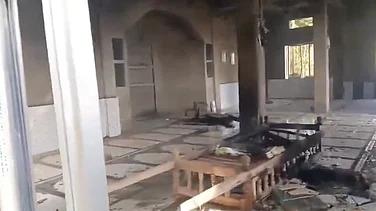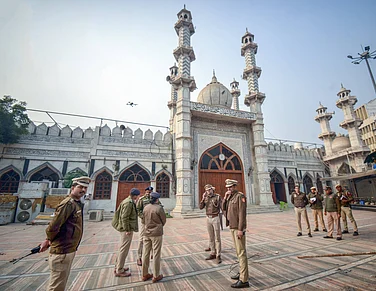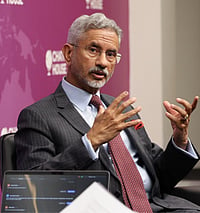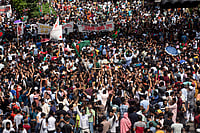The National Family Health Survey (NFHS-5) of 2019-21, conducted by the Ministry of Health and Family Welfare, has shown improvement in women and child nutrition in Jharkhand. For instance, while 62.6 per cent of pregnant women were anaemic in 2015-16, it came down to 56.8 per cent in 2019-21. (See box for more details). Similarly, 45.3 per cent of children were stunted in 2015-16 which improved to 39.6 per cent in 2019-21.
Despite improvement on various parameters under NFHS-5 there is a lot more to be desired. In order to address this the state government under Hon'ble CM Hemant Soren launched a flagship initiative on December 29, 2021 - SAAMAR (Strategic Action for Alleviation of Malnutrition and Anemia Reduction) - to improve the status of malnutrition and anaemia among children, pregnant women and lactating mothers.
Under this campaign, the state government initially identified five districts namely Chatra, Latehar, Sahebganj, Simdega and West Singhbhum for the pilot phase of the project. These are tribal-dominated areas and they ranked quite low in nutrition indicators with malnutrition such as stunting, underweight condition, anaemia, neonatal mortality rate etc. being quite high among females and children.
The state government engaged all the concerned departments in a collaborative manner to deal with the issue effectively. The Department of Health and Family Welfare, Food and Civil Supplies, Rural Development or Women and Child Development, are working in convergence to improve the nutritional status of Jharkhand.
Community leaders, schools, village folks and other concerned bodies will play a key role in implementing the initiative and further support to spread awareness about the importance of nutrition for healthy living.
POSHAN Dal (Anganwadi Worker (AWW), Accredited Social Health Activist (ASHA) worker, and Self-Help Group members using app-based data collection tools such as tablets and android phones have been teamed up to collect data for the identification of malnourished children and women suffering from anaemia.
While the Malnutrition Treatment Centre takes care of children suffering from Severe Acute Malnutrition, local health centres provide nutritional advice and assistance to anaemic women.
To create awareness, the government is making the most of Village Health Sanitation and Nutrition Day (VHSND). Realising the need for nutritional leadership at the village level, the state government has engaged heads of villages and panchayats along with others to improve nutrition.
Households identified with malnutrition will be further linked with social protection measures, food security measures and access to NREGA/other livelihood options to improve the income of the families.
It will be implemented through a life-cycle approach wherein all pregnant women, lactating mothers, children between 6 months and 10 years, adolescent girls between 10 to 18 years, and other women in the reproductive age group of 18 to 35 years will be targeted.
One of the unique initiatives of the campaign is to focus on tribal women along with the general public. Since the food and nutritional behaviour of the tribal population is not available, SAAMAR scheme has for the first time tried to address this issue as well.
A dashboard will enable the tracking of individual beneficiaries and their nutritional status thus helping to build a holistic and comprehensive picture of nutrition.
The system will also work as an Early Warning System (EWS) by identifying individuals or families showing signs of distress who would be linked to a) social protection measures and b) food security measures.
Social welfare and nutrition is the third-highest priority sector in terms of budgetary allocation as the state government has allocated 6624 cr in the year 2021-2022. This is 4 per cent higher than the previous year’s budget which was 6357 cr.
With its focus on female nutrition, the state government aims at addressing the core issue of social development that will pave the way for a prosperous and healthy society in the long run.






















